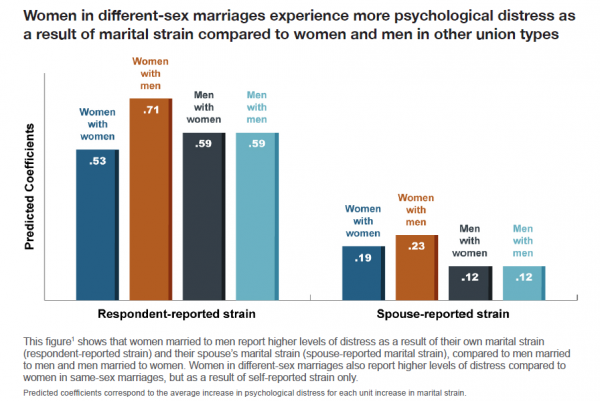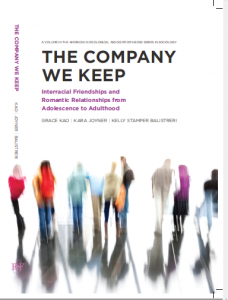
January 26 was National Spouses Day, and Valentine’s Day is just around the corner. If you’re looking for a spouse — or hoping to become a better one — here are a few things you might want to know, including why you shouldn’t panic if no one is on the horizon.
Get a College Education
- As late as 1970 more than 80% of US women age 40-45 were married, with few differences by education but a slight advantage for women with a high school degree. In the last two decades, however, a different and much larger educational marriage gap has emerged. As of 2014, 75% of women aged 40-45 with a Bachelor’s degree or more were currently married, compared to only 65% of those with some college, 59% of women with a high school diploma, and just 56% of women who had not completed high school.
- In the 20th century, women with PhDs or professional degrees were the least likely women to marry. Today, women with such advanced degrees are the MOST likely to marry. More than 80% of women age 40-45 with professional degrees or PhDs were married in 2014.
- A college education is especially protective against divorce. The Pew Research Center reports that as of 2015, college-educated women had an 80% chance of their marriage lasting more than 20 years. For women with a high school education or less, the chance of a marriage lasting that long is only 40%.
Take Your Time
- In 2018 the average age of marriage reached an all-time high of 30 years for men and 28 for women.
- But these averages reflect far greater variation in the chance of marriage AFTER age 30 than in the past. Sociologist Philip Cohen estimates that 85 percent of White women and 78 percent of Black women will marry in the course of their lives. Although Black women marry later than White women until their early thirties, they marry at higher rates after that age. In fact, Cohen calculates that a White woman who reaches age 45 without marrying has a 26 percent chance of marrying at some later point, while a Black woman still single at 45 has a 49 percent chance of marrying.
- And almost every year a woman postpones marriage, up to about age 49, lowers her chance of divorce.
Get by with a little help from…the internet?
- The most common way heterosexual adults met their future marital partners in the latter half of the 20thcentury was through friends. However, after peaking at 35% in 1990, the percent of heterosexual adults who met their partner through friends had fallen to 20% by 2017. Meanwhile, the number of adults who met their partners online had soared to nearly 40%, up from just 1% in 1995. For heterosexuals, the internet is now the most common way of meeting a marital partner. Bars and restaurants are the second most common place to meet a partner, with 27% reporting they met their partner there, up from 19% in 1990. Yet most of these initial in-person meet ups were actually precipitated by online connections, making the number of couples who owe their start to online dating even greater! Heterosexuals who meet on line tend to enter marriage more quickly than their counterparts who meet in other ways, but they do not have a higher risk of breakup.
Don’t be afraid to buck outdated rules
- As of 2016, one in ten marriages involved partners of different racial/ethnic backgrounds, a more than three-fold increase from 1980. Among newlyweds, approximately one in six is married to someone of a different race or ethnicity. Many researchers believe these trends reflect an erosion of the traditionally rigid boundaries between different faith communities and racial-ethnic groups.
- In the past, marriages where women had higher education or higher earnings than their husband had an elevated chance of divorce. But in recent decades women’s advancements in education and the work force have ceased to threaten marital stability. Couples where men and women are educational equals are the least likely to divorce and those in which women are more educated than their male partners are no more likely to divorce than those where the man is more educated than the woman. Since the 1990s, couples where women earn as much or more than their husbands no longer have a higher risk for divorce.
When making marital wishes, don’t forget the nightly dishes
- It turns out the best predictor of a happy marriage is not how good-looking, talented or rich your spouse is, but how much you share – in your conversations, your interests, and especially the daily routines of life, such as housework. Gender egalitarian and same-sex couples have some big advantages here, since they tend to share more equally. Sharing housework and childcar
e, especially, is associated with greater relationship quality – including more satisfying and frequent sex. But have a conversation about who is going to do what, because when it comes to sharing housework, some tasks matter more than others. If you’re a woman in a heterosexual relationship and your partner won’t share the dishwashing, this could mean your relationship is headed in the wrong direction. 41% of women who do the majority of dishes say their relationship is in trouble, compared to just 20% of those who share dishwashing equally. Meanwhile, men are three times more satisfied with their relationships when their partner trusts their judgment enough to share the shopping. - Talk it out. For women who want their partner to share responsibilities for domestic labor, communication is key. Men who report higher quality communication with their partner are more likely to do an equal share of housework and childcare.
And always remember, single doesn’t mean second-best
- Only 16% of men and 17% of women say that having a spouse is essential to their fulfillment. What IS essential for a fulfilling life, according to 57% of men and 46% of women, is having an enjoyable job or career.
- Once you have an education and a secure income, you do have a better chance of getting married. But you also have a better chance of enjoying health, happiness, and a wide range of friendship networks if you stay single. In fact, at the highest income levels, never-married individuals actually report more supportive friendship networks then their married counterparts.
- This is an important advantage, because having supportive and numerous friendships is a stronger predictor of mental and physical health than being married or living with a partner.
Daniel L. Carlson is Assistant Professor, Department of Family and Consumer Studies, at the University of Utah, and a Board Member of the Council on Contemporary Families He can be reached at daniel.carlson@fcs.utah.edu; 614-286-4104. Stephanie Coontz teaches history and family studies at The Evergreen State College, Olympia, WA and is Director of Research and Public Education at the Council on Contemporary Families. She can be reached at coontzs@msn.com; 360 556-9223.









